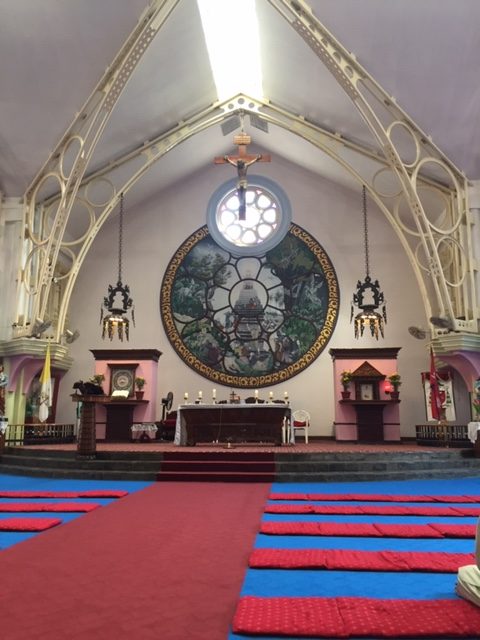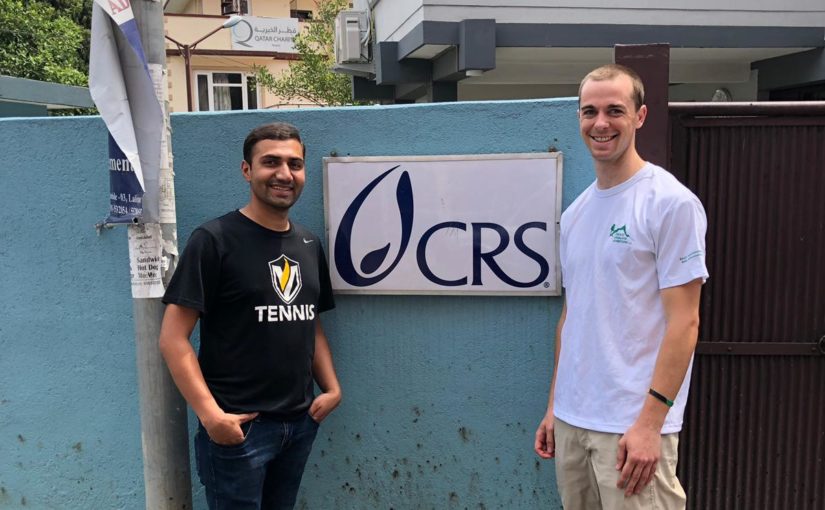by: Brian Hickey
It started pouring. My teammate Belen and I had barely started our descent from a one-hour, strenuous hike straight uphill when the rain came. For obvious reasons, we stuck out as foreigners among the local Nepali population, even more so considering our unpreparedness for the fast-moving rain clouds amidst the start of Nepal’s monsoon season. Nepalis around us put on their rain jackets, walked around with umbrellas, or simply ignored the rain. Instead of cursing our luck, Belen and I decided to embrace the rain and smile at the locals trying to stifle their laughter at us soaked westerners. As we continued our descent, we ran into a group of young women walking and dancing with no rain gear. We joined the women reveling in the weather conditions.
Throughout our past month in Nepal, we have heard stories of resilience in communities recovering after natural disasters. We have listened to stories about individuals continually rebuilding their shelter and livelihoods four years after the devastating 2015 Nepali earthquake. We have heard these stories from grandparents who lost grandkids and widows wanting to serve us tea because we remind them of their kids who are now gone. I have witnessed the faith of the small Catholic community in Nepal reconstructing a beautiful church that was lost among the earthquake, bomb, and arson attacks. A community that passionately celebrates Mass and has formed a tight-knit parish family despite adversity.

The person I have learned the most from in Nepal has been our translator, Ramchandra. Ramchandra is not too much older than me and is soon to be a father of two. He is a hard worker and willing to do whatever it takes to assist us in our research. During one of our long talks about life and personal desires for future impact in our careers, Ramchandra began speaking about his efforts leading citizen initiatives in his community. Ramchandra, along with several other driven community members, was concerned by the distance people with debilitating diseases had to travel to reach medical care at a hospital. They are what bestselling author and New York Times columnist David Brooks refers to as “community weavers.”

Ramchandra’s group, the weavers, inspired the community to give out of their valuable income (some living in poverty) to build a center for the sick to have proper rest and support during their journey to obtain medical care at the hospital. While these community members do not know the majority of the people who will benefit from the new community center, Ramchandra is proud to know he does not necessarily have to run for political office or have a position with a large NGO to see a need and do something about it.
Ramchandra and his fellow community members highlight a theme we have consistently observed in Nepal: communities are banded together by weavers like Ramchandra who assist fellow citizens in their time of need. They rejoice as others rejoice and mourn with those who mourn.

LEARNING TO EMBODY THE WEAVER SPIRIT
This month, we are continuing our research with Catholic Relief Services (CRS) through the Keough School’s i-Lab in a state in India that has suffered from recurring cyclones, floods, as well as attacks on minority religious communities. With our work, we hope to discover the effects of communities constantly having to grapple with devastating human-made and natural disasters.

As Belen and I seek to develop a tool for CRS to help households reconstruct shelter after major traumatic experiences, we must keep in mind the importance of community weavers. We must ask how organizations like CRS can assist households and communities in rebuilding their shelter and livelihoods so that when the rain, or other difficult times come, community members can continue to dance knowing a brother or sister will soon come with arms open wide to help. Perhaps, when we come home, we can also look at our community and neighborhoods in the United States and discover how we can develop as weavers like Ramchandra.

